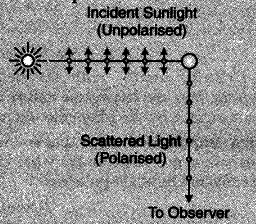solve nd explain this question stepwise
A Light from an ordinary source (say a sodium lamp) is passed through a polaroid P1. The transmitted light is then made to pass through a second polaroid sheet P2, which can be rotated so that the angle
() between the two polaroid sheets varies from . Show graphically variation of the intensity of light , transmitted by P1 and land pr as a P2 , as a function of the angle . Take the incident beam intensity as I0 . Why does the light from a clear blue portion of the sky , show a raise and fall of intensity when viewed through a polaroid which is rotated?
Dear Student
When an incident beam intensity from an ordinary source is  ,beam intensity of polarized light from
,beam intensity of polarized light from  is
is  /2 .If ө is the angle between
/2 .If ө is the angle between  and
and  ,then according to the law of Malus, intensity of polarized light from
,then according to the law of Malus, intensity of polarized light from  is,
is,


Light coming to us directly from the sun is not polarized. It is the part of sunlight that is scattered by molecules in the air that is polarized. Light coming from sun get scattered by the molecules of earth’s atmosphere. After scattering through molecules light gets polarised as shwon below

When this light passes through rotating Polaroid then intensity changes as per Malus law.
This is the reason why rise and fall of intensity is observed when light from clear blue portion of sky is viewed through rotating Polaroid.
Regards

